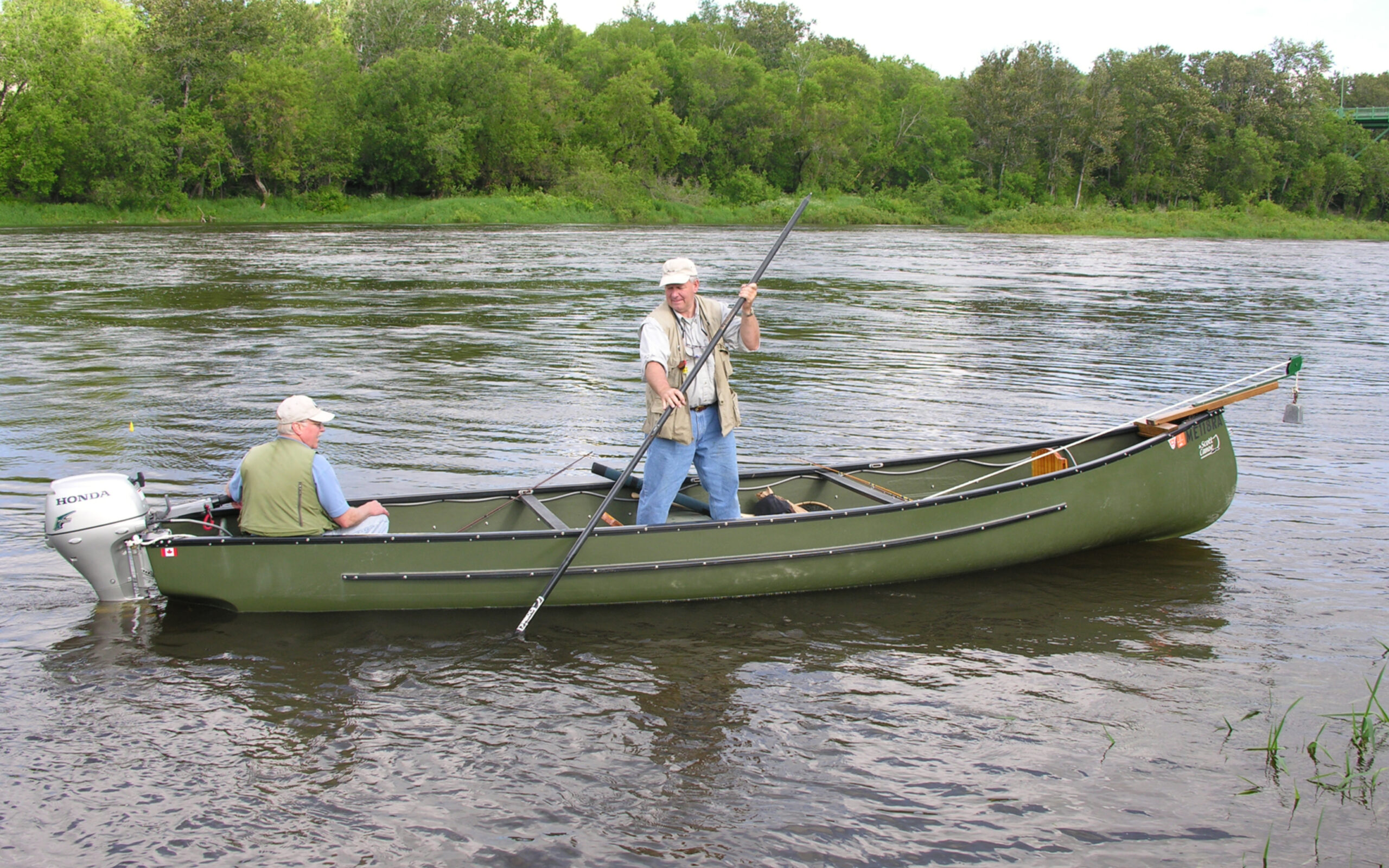
There’s an ongoing decades-long dispute (probably longer) among waterborne sportsmen regarding what constitutes the perfect canoe. Not a craft that’s occasionally paddling on streams and small ponds for leisure, but a safe, sturdy dependable canoe for fishing, hunting or camping ventures on most any size waterway in most weather conditions.
I’m here to inform you, after many years of experience, experiments and investigation: no single canoe does it all.
I have, however, found one particular model that fits the bill more than any other I’ve used, and perhaps my research and conclusions will benefit some of you. First and foremost, hardcore outdoorsmen need a safe, sturdy workhorse of a watercraft, not a short, light, shallow model more fitting for scenic, calm-condition paddle tours. Look for a 20-footer; wide beam, fairly flat bottom with no keel; and a square stern for a solid motor mount. Double-end canoes require a side-mount motor, and while they may run a bit shallower there are several disadvantages that don’t make up for that one benefit.
Wooden canoes require a good deal of upkeep. Even the models with just wooden gunnels and thwarts need regular sanding and varnishing. Kevlar, Royalex, ABS, polyethylene resins and a few other space-age synthetics are lightweight and tough, but very expensive and not strong enough to be used without other supports available in large, wide boats. Fiberglass has proven to be the best all-around canoe material for strength, durability and moderate weight at a reasonable price.

Mike Wallace stands on the rear seat of a big, sturdy Scott canoe, which works as a steady higher casting platform to present a dry fly to rising trout. (Bill Graves)
In truth, I went an altogether different direction when I bought my first large canoe for trolling Aroostook lakes, fishing Atlantic salmon on Maine and Canadian rivers with paddle and pole, and for floating and jump shooting ducks on regional streams. My pride and joy was a 19-foot aluminum Grumman square stern, whose bright silver interior and exterior I immediately spray painted in camouflage colors and patterns.
It was a good, serviceable boat at a reasonable price and met all my needs at the time. Very stable and fairly light, it handled well with a paddle, pole or a 9.9 Mercury in various situations and could be car-topped on a roof rack for travel. On the downside, the metal was freezing or scorching hot to handle, depending on current weather, and noisy if an item was dropped or any object struck the hull. Also, the aluminum was a magnet to rocks,-there was no such thing as sliding over or around, so care had to be taken regarding depth and exposed obstacles.
My first all-around fiberglass canoe was a 20-foot beauty constructed in Veazie by Jackson, a well-known and respected company whose deep, wide and stable craft was very desirable. It served me well for a decade and when I finally sold it I got my entire original price back since the company had closed and it seemed top-rate sporting canoes like the Jackson were scarce.
Some friends and I were traveling to Medway on a bass fishing venture about 15 years ago, when I drove by Two Rivers Sports shop. I spotted what turned out to be my next canoe. It was a 21-foot Scott Hudson Bay built by Arbitibi & Co. of Ontario, Canada. Barry Davis, the owner of Two Rivers, had extensive knowledge and experience with a wide variety of canoes and established an exclusive deal to import and sell these big, bold, beautiful watercraft.
Over the years Barry brainstormed with the company to improve the design for comfort and safety; built-in fiberglass splash, rails took the place of wooden ones that were screwed into place, heavy-duty seat receptacles and seats rather than just benches constituted two great improvements. Removable bow anchor masts, extended gas lines so external tanks can sit in the bow, water repellent snap on canvas covers and even a choice of interior seat configuration became available.
All of these alterations culminated in a brand-new canoe called The Maine Freighter. This model offers two more features that in my opinion are especially important to older anglers and hunters. There are no protruding ribs on the floor of the canoe to catch a foot on, and there are no thwarts to step over the entire length of the boat. It’s 21 feet long, 54 inches wide at the center and 20 inches deep, and I’ve seen a 250 pound man stand on the gunnel without tipping the canoe over or even taking on a drop of water. This safe, stable all-purpose canoe comes on a heavy-duty aluminum trailer as well.
I run a four-stroke, 15HP Honda outboard for big waterways and a Minn Kota Traxxis 55-pound thrust electric on small ponds and streams. In full disclosure, I still own my aluminum Grumman as well as a 57 pound, 17-foot Royalex Old Town canoe to haul waterfowl gear through the woods to remote duck ponds. The extraordinary Two Rivers Maine Freighter is my go-to choice on nine out of 10 outings, and will easily seat three sportsmen with all their equipment and dunnage.
In truth, I really don’t think there is just one perfect canoe for all occasions, at least not from my experience. Two Rivers Maine Freighter, however, fulfills most of the requirements of any Crown of Maine cast and blast sportsmen. It’s a great family canoe as well for a day or even a weekend outing. Check it out online or visit in person and check out the various colors, features and interior designs. Maybe there’s one to “float your boat.”







